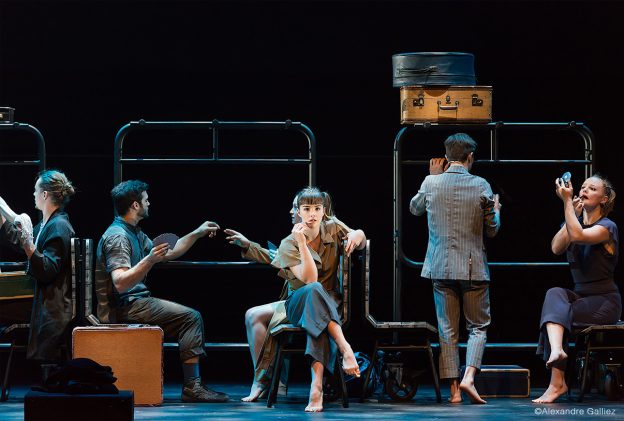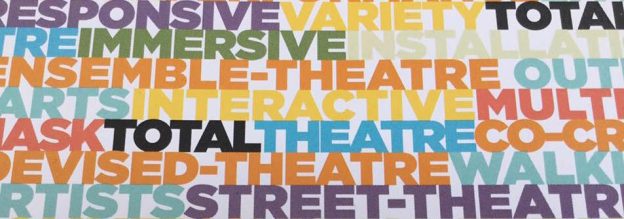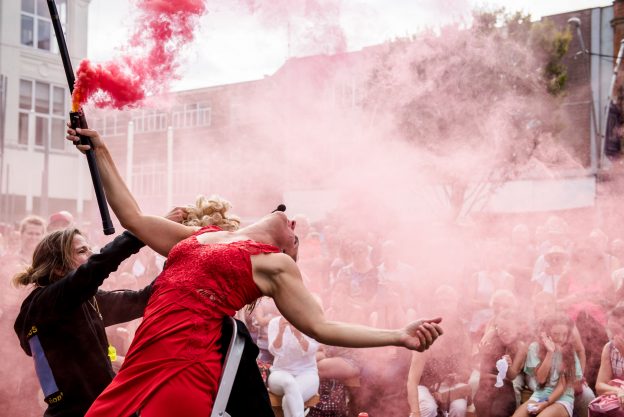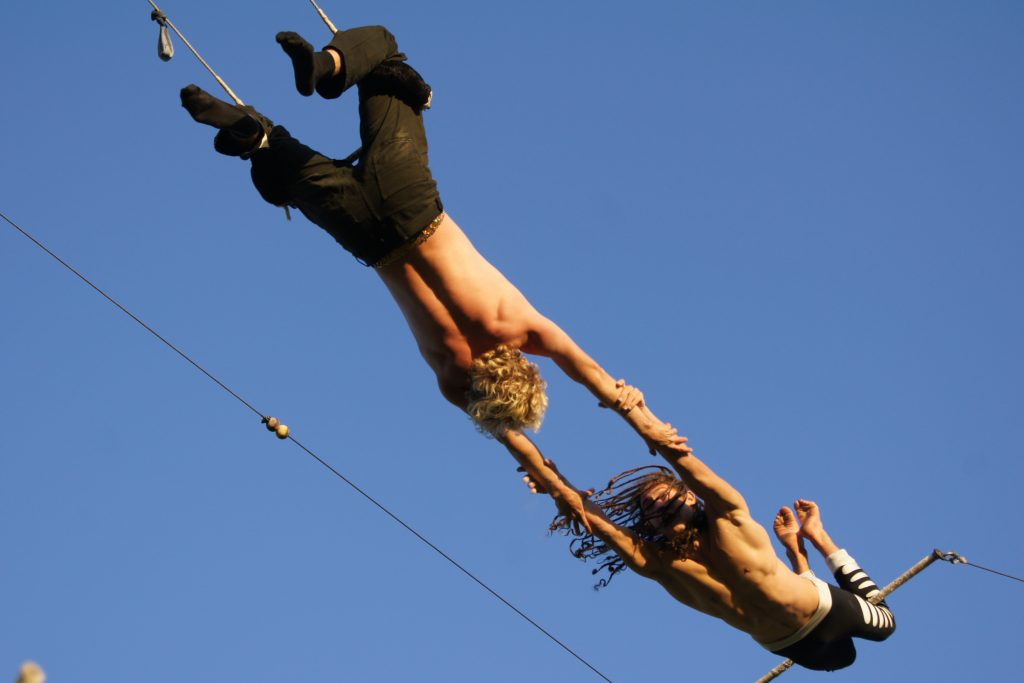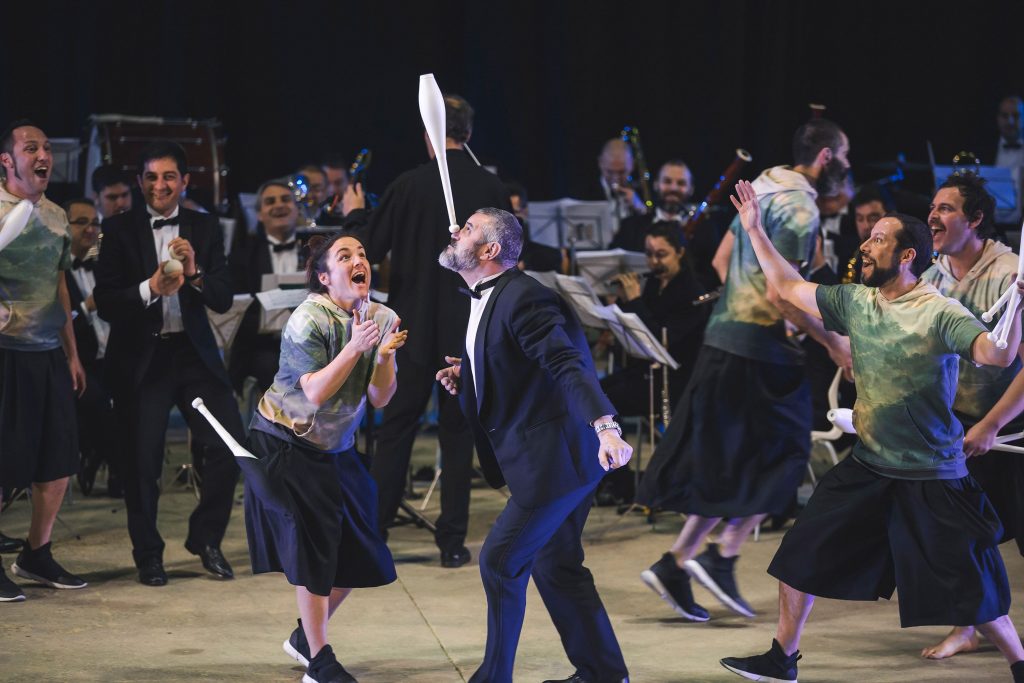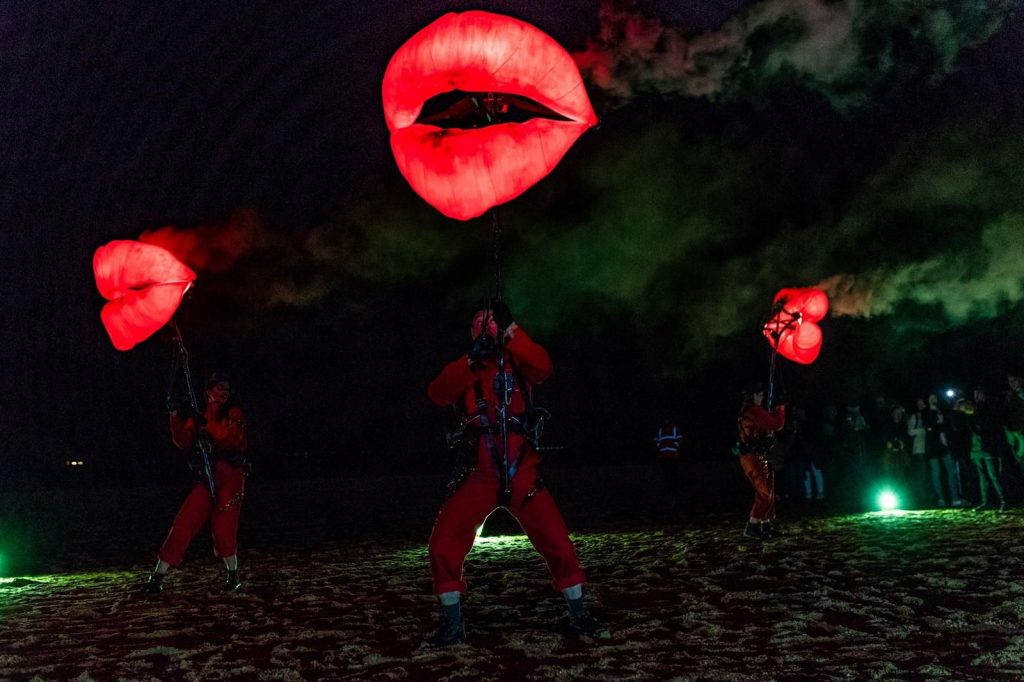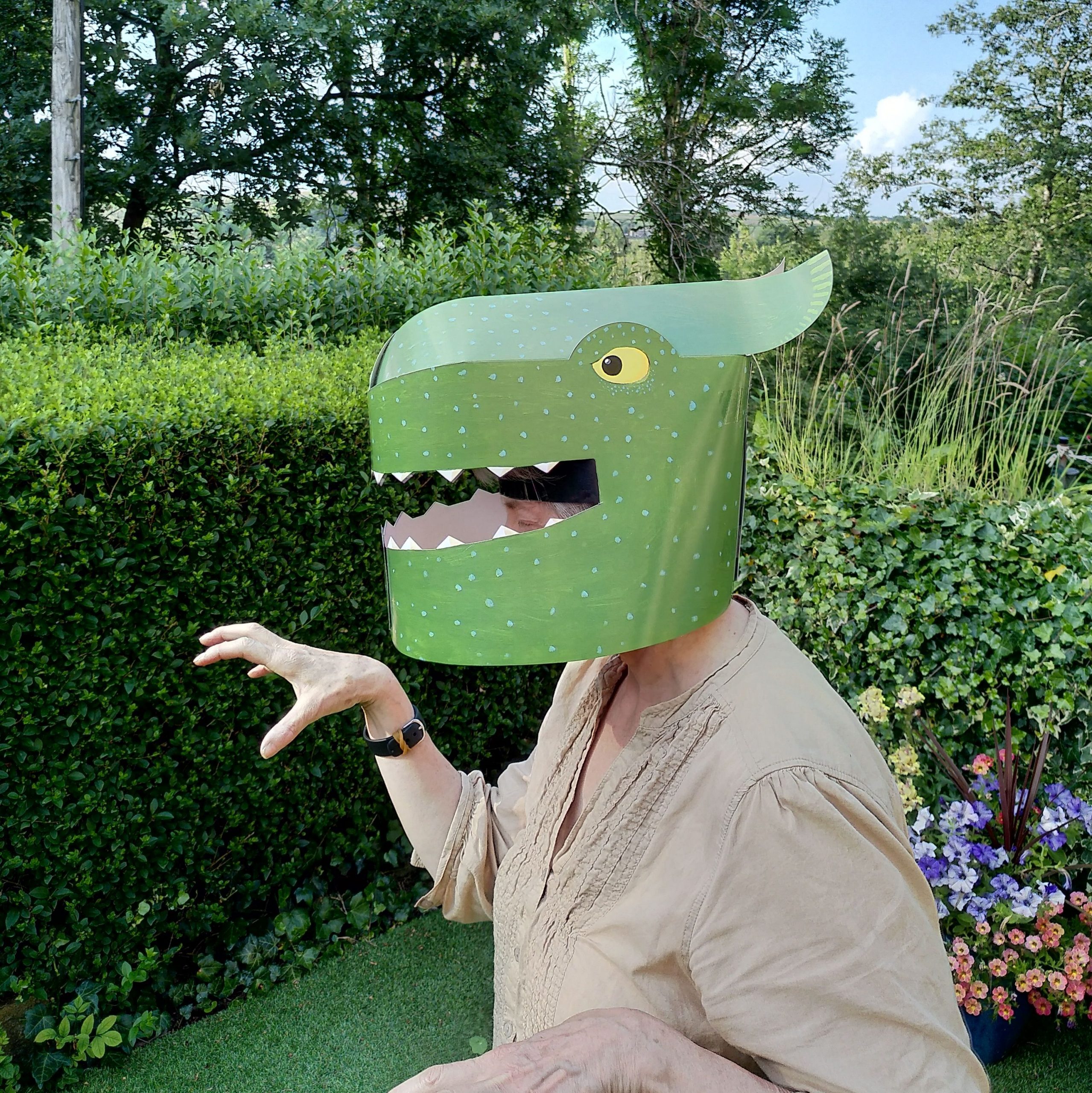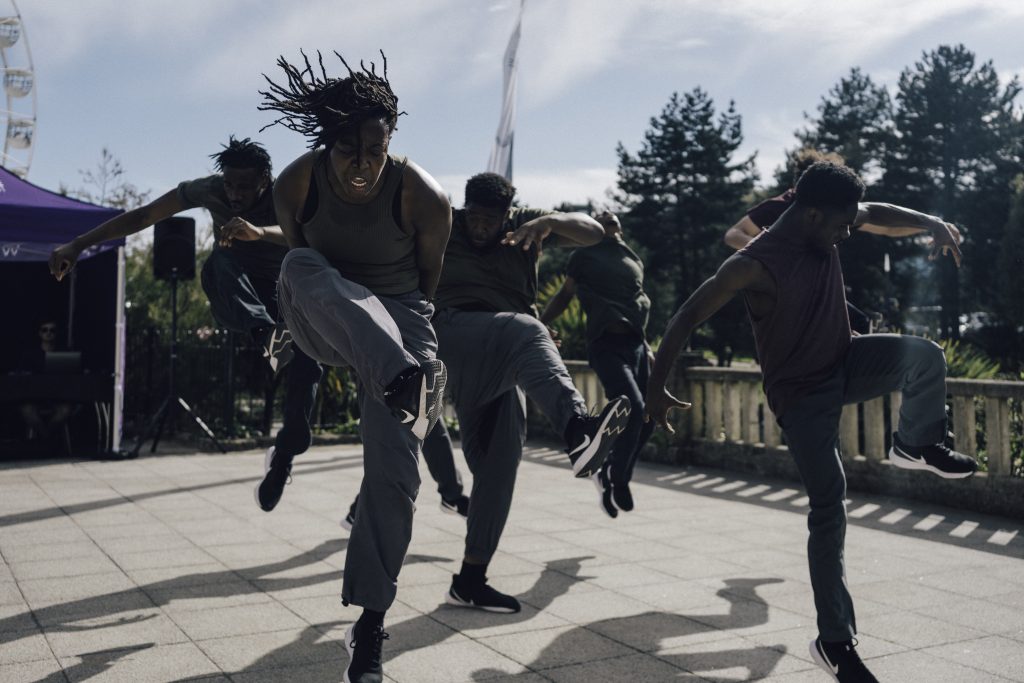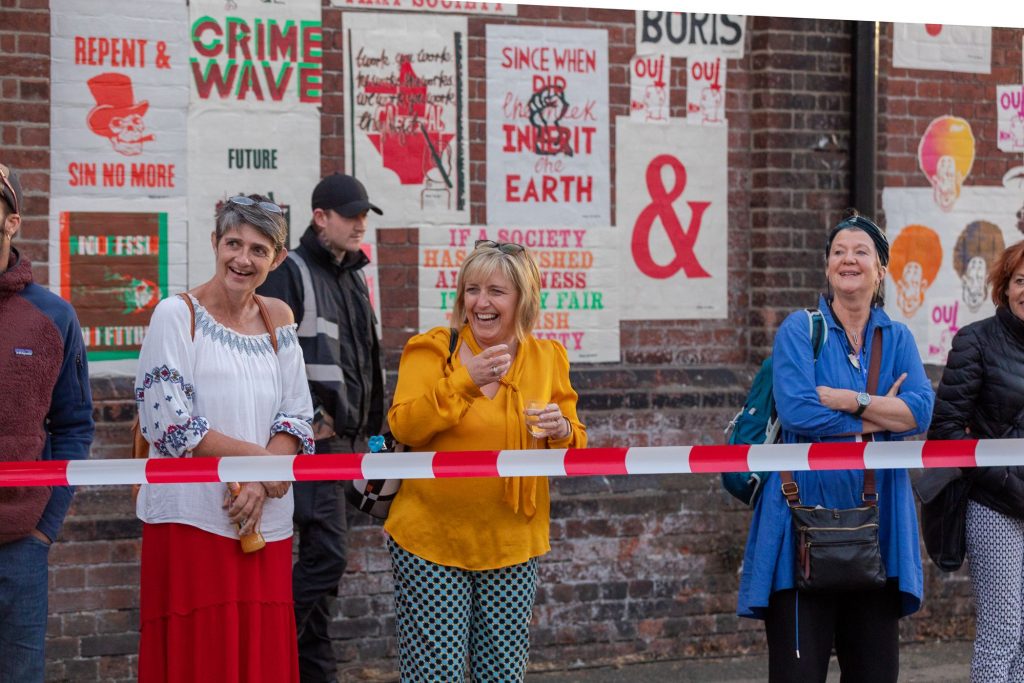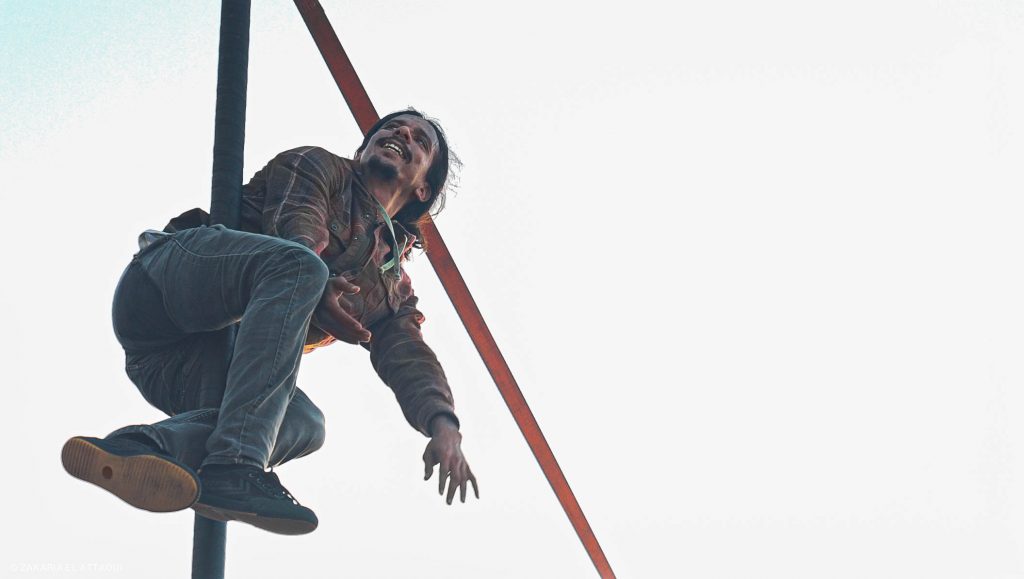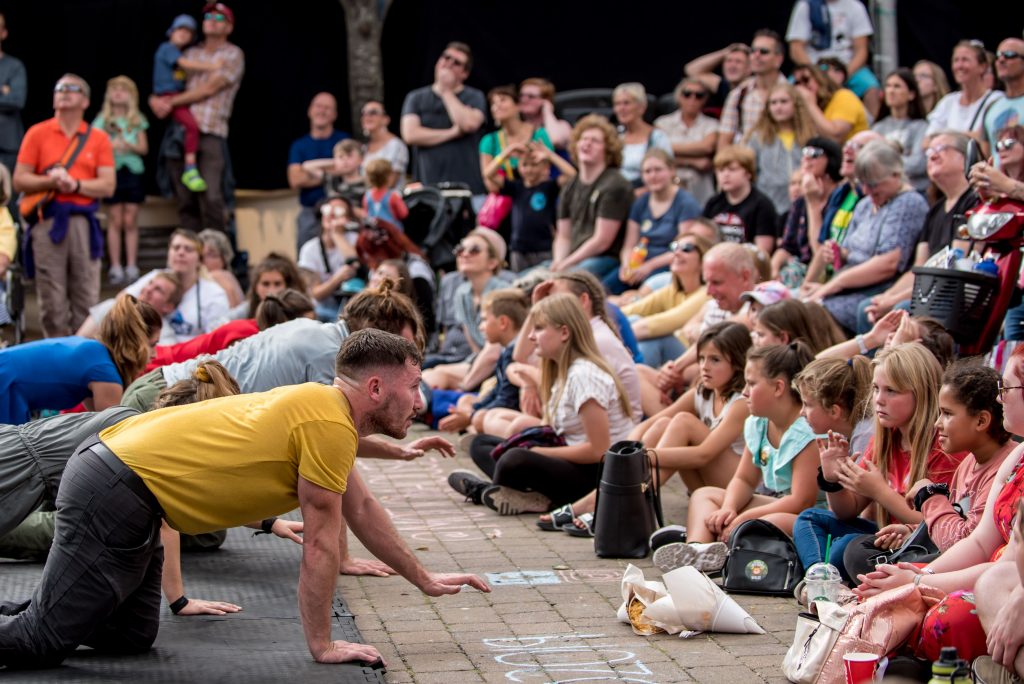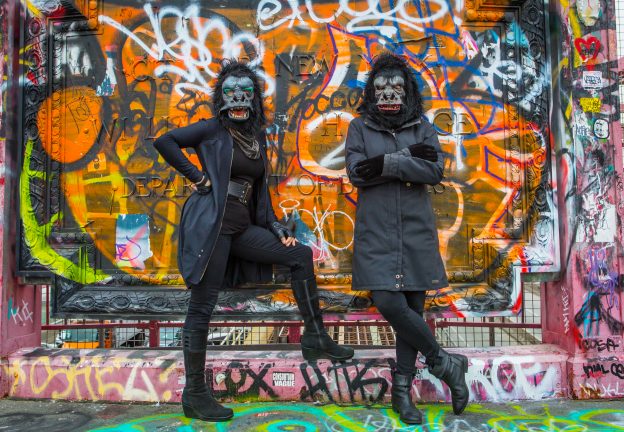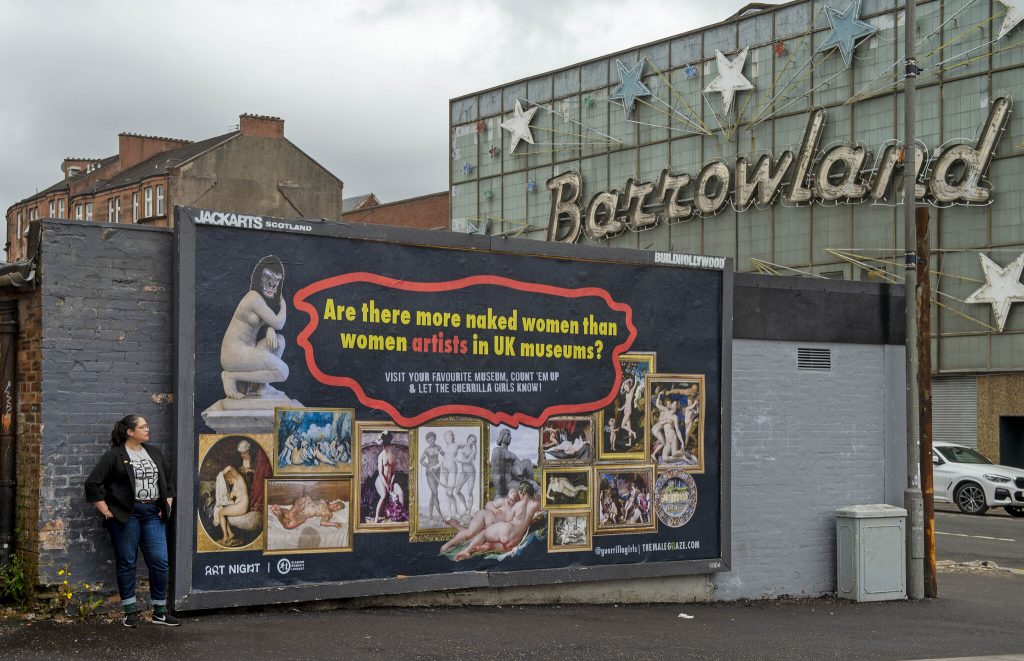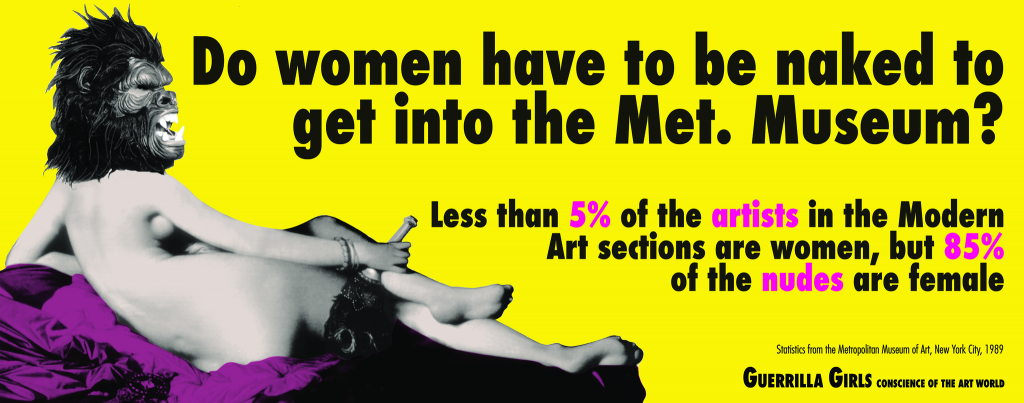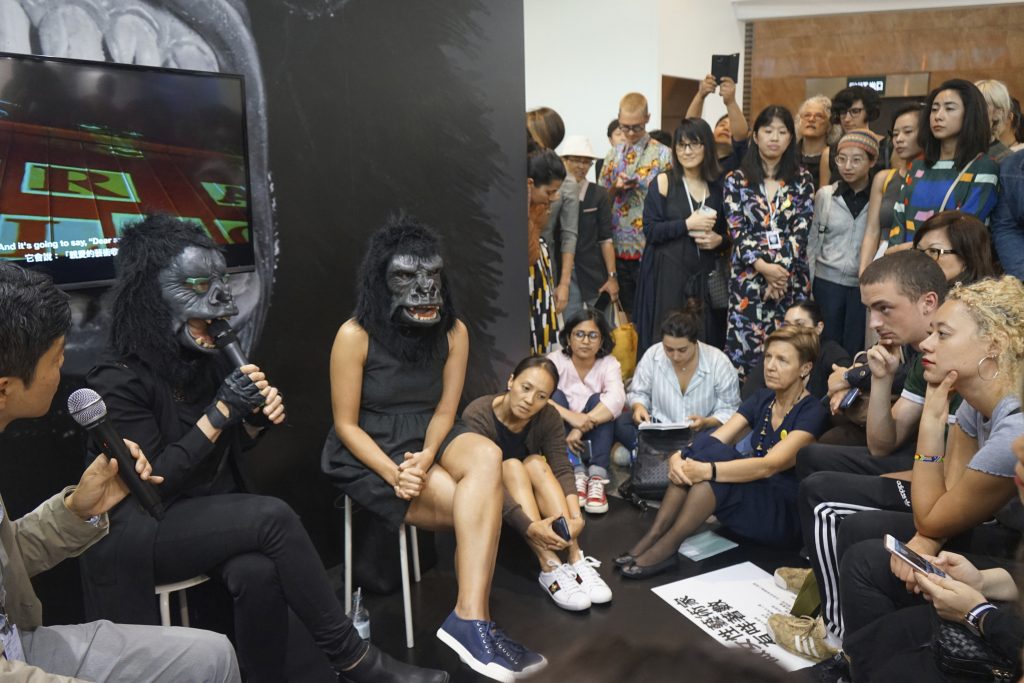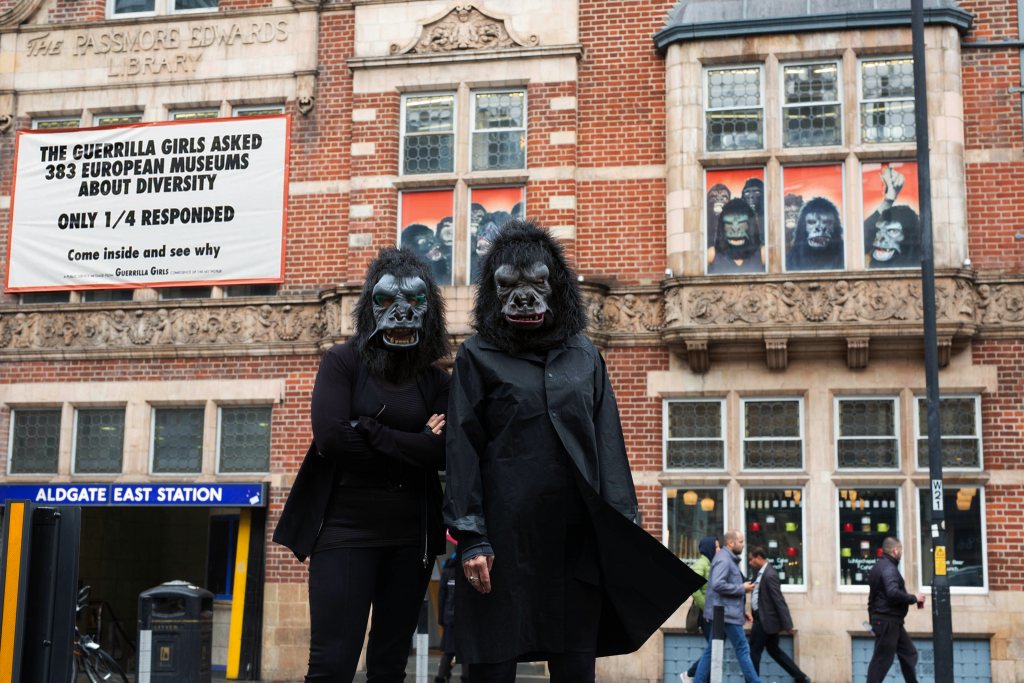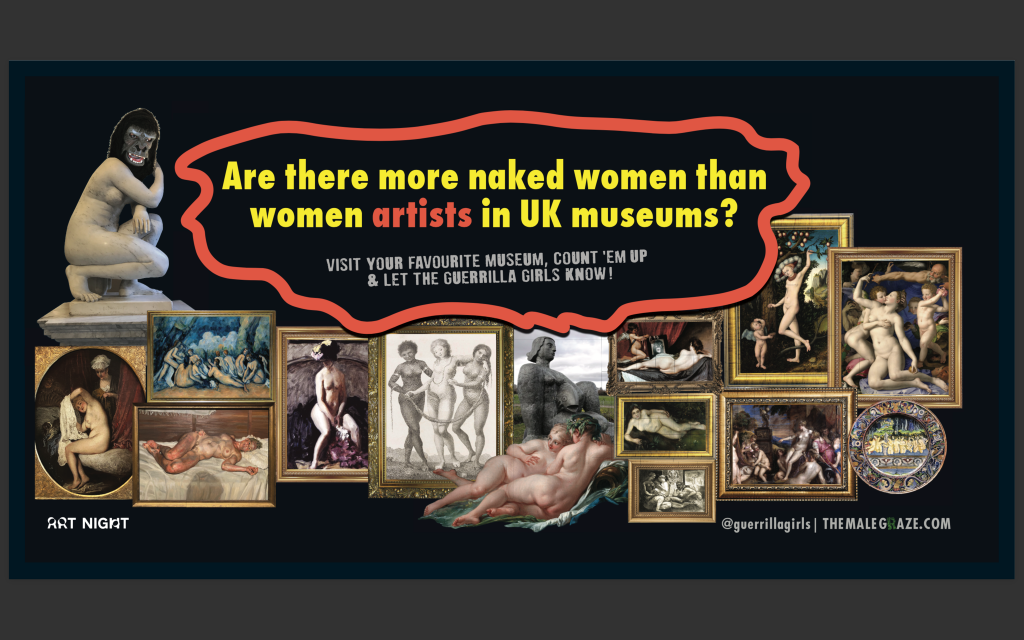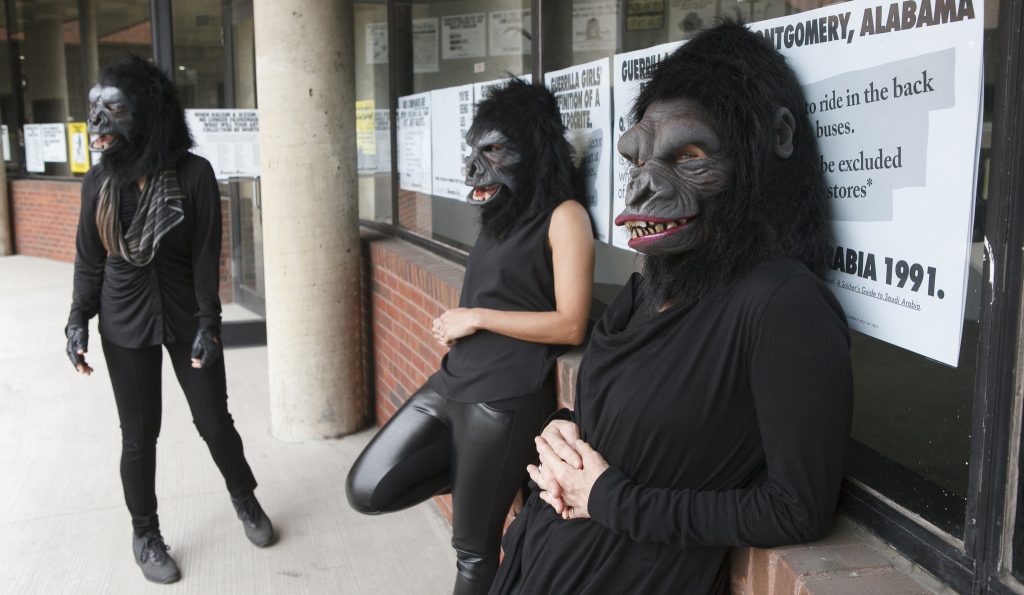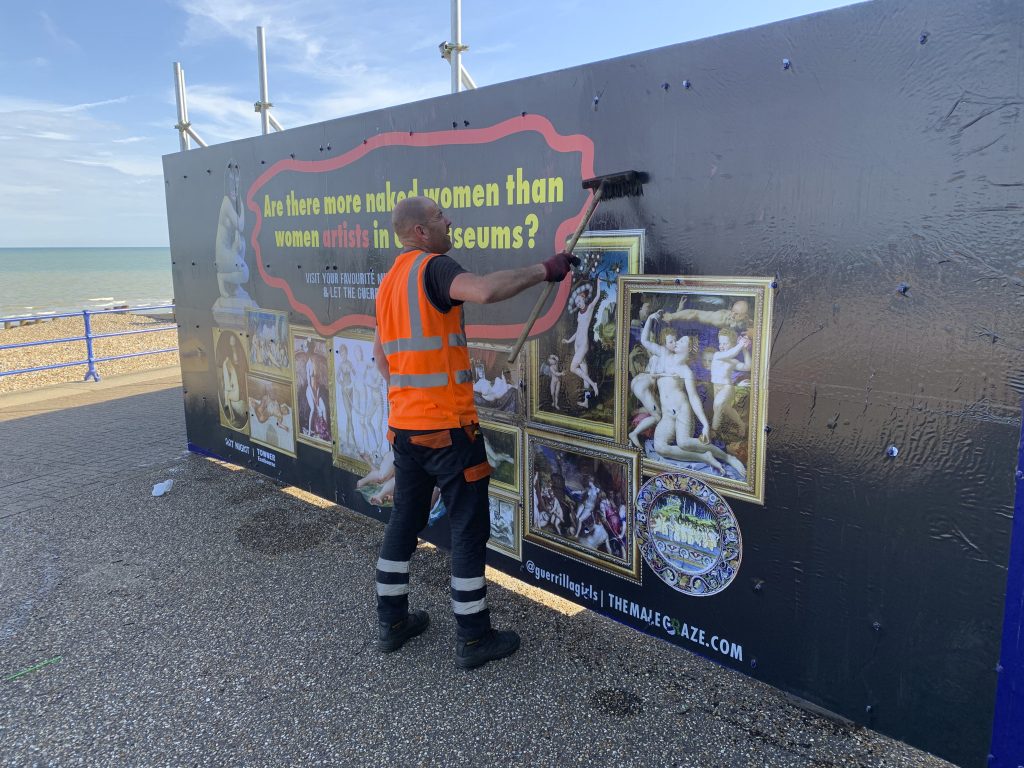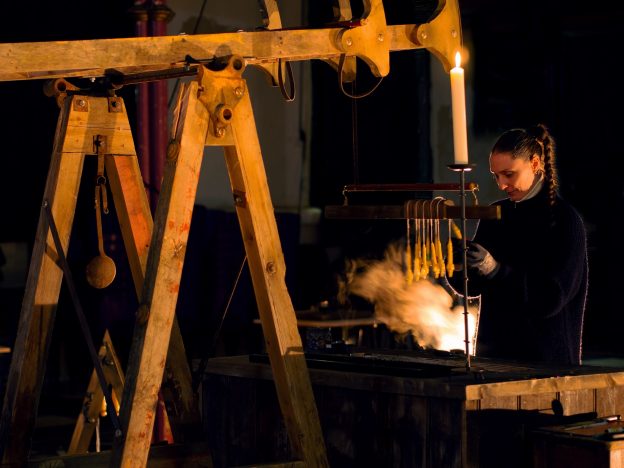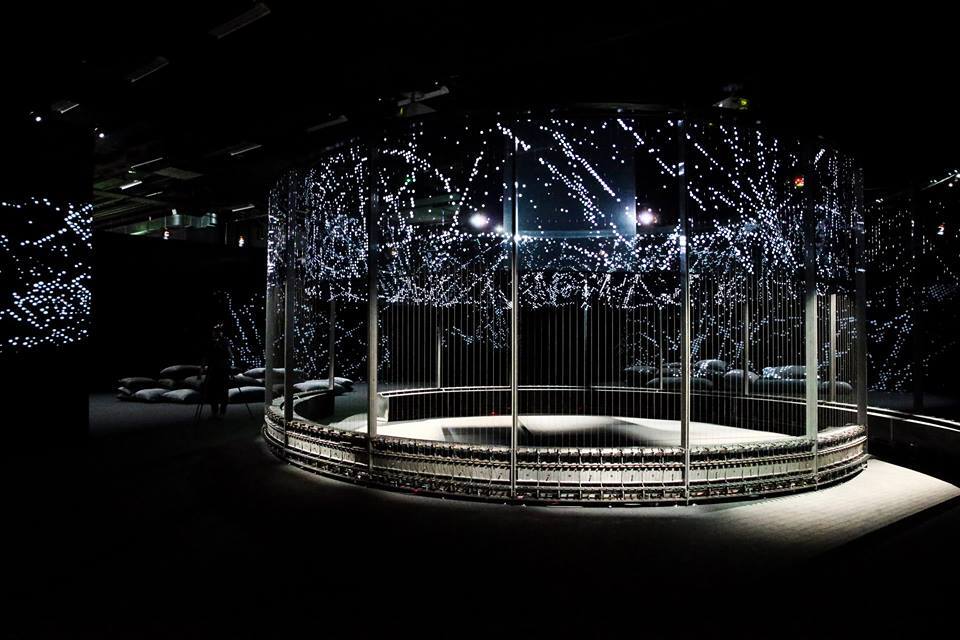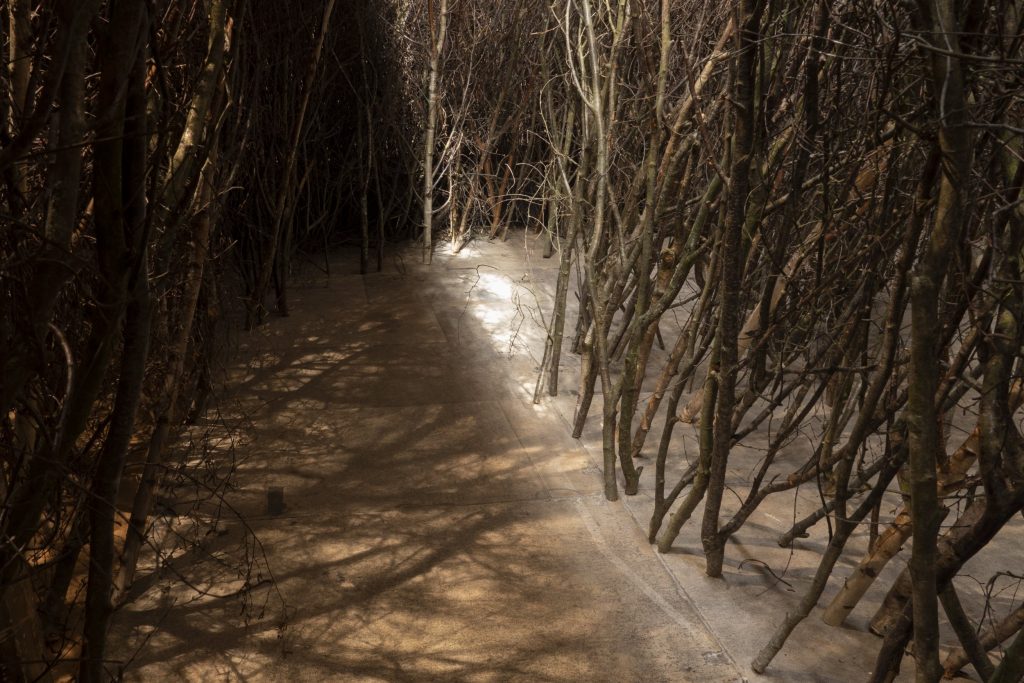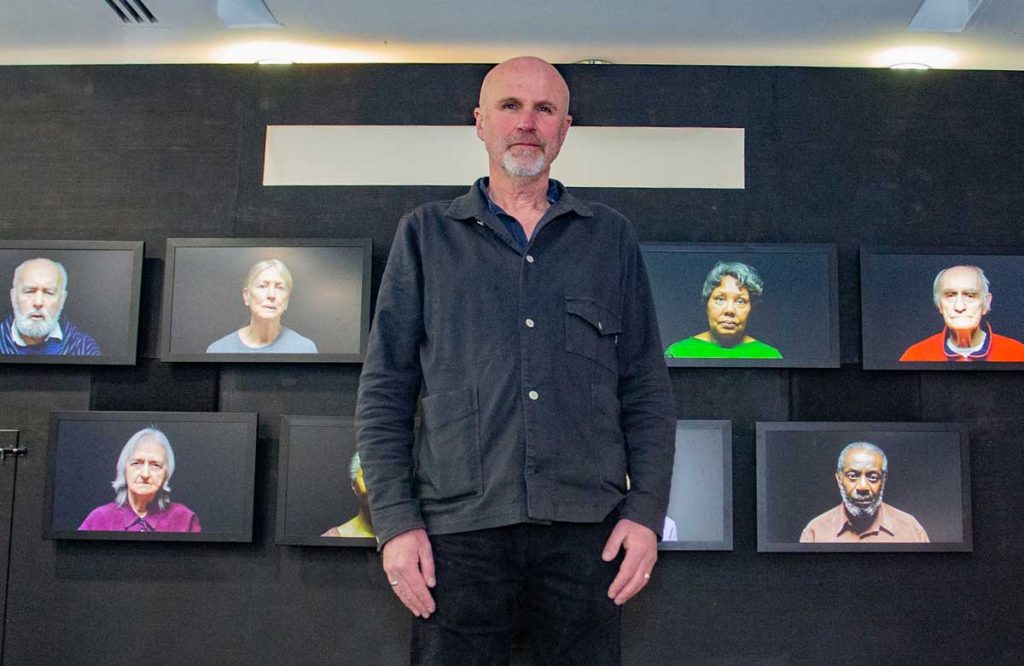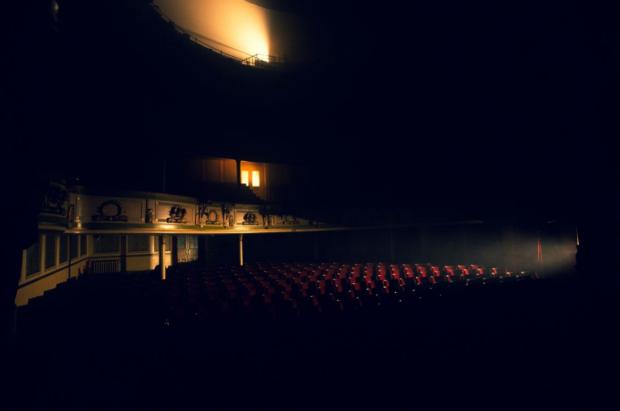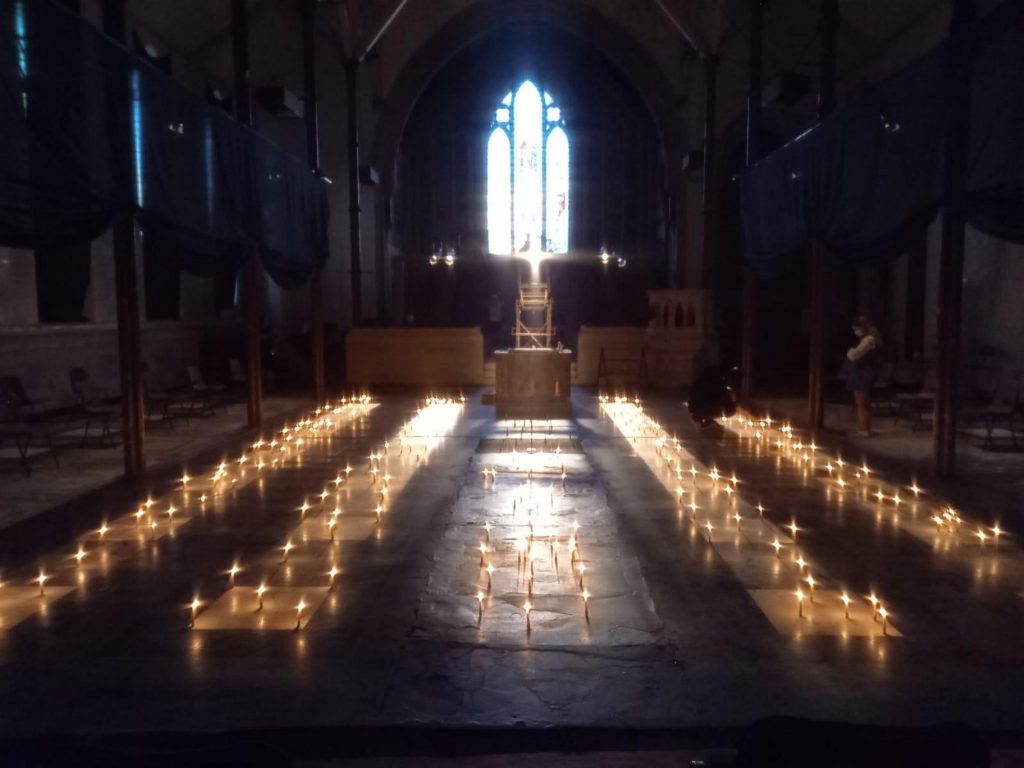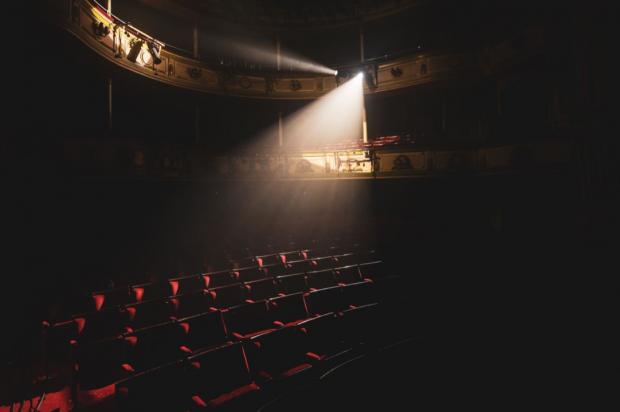Circus, circus, circus! Three thrilling shows – UNITY, Luminosa, Passagers. One outdoors, two indoors. All seen September 2021 and reported on here by Dorothy Max Prior
Well, it’s been a tough couple of years for all of us. Theatres closed, festivals cancelled. Actors, musicians, dancers, technicians all twiddling their thumbs at home, wondering what’s going to happen next.
But if there’s one branch of the performing arts that has been slammed harder than any other, it is surely circus. If circus artists are not able to train, they are adversely affected in a way even more fundamental than the difficulties faced by dancers: it is not just that they need to be fit to do their work, if they don’t get to train safely, they are potentially putting their lives at risk. Working with other circus artists and/or with their specialist equipment is vital. Denied that, they can become dangerously out of kilter with the demands of their work. And earning a living through teaching circus skills became a complete nightmare this past year, with new rules demanding that you have twice as much equipment (silks, ropes, whatever) as usual to-hand so that there is no touching and sharing.
There have been small oases of sanity in amongst the Covid madness. Whilst some circus artists and schools have been totally stymied by venues, local authorities or educational institutions taking their spaces from them, or making operating in them nigh-impossible with an ever-more complex set of rules, a number of venues and arts organisations have gone out of their way to enable circus artists to continue training and making work, finding ways to open up their spaces to them. These include Out There Arts in Great Yarmouth and Jacksons Lane in London.
Out There Arts have had numerous circus artists in residence over the past couple of years, including the legendary Circolombia, working in their lovely Drill House creation centre. The organisation has resolutely kept the centre open and available to artists – and of course if artists and companies are operating as a bubble and testing regularly, than there is no reason why not. It is a mystery why more venues and arts organisations have not done the same, rather than staying closed, with furloughed staff having their livelihoods secured whilst artists languished. Fair enough if audiences can’t be allowed in, but there is no justification for the lack of initiative in allowing artists in to theatre/arts spaces to work.
The Outdoor Arts sector has provided some outlet for circus artists whilst theatres have been closed – throughout 2020 and 2021, festivals and outdoor events have gone ahead, including the Greenwich and Dockland festival in London, for example – and it is great to see that good work continuing. But now, thank goodness, we are also seeing the re-opening of theatres and the reinstatement of touring shows, both national and international. So here, we highlight three great shows seen in the past fortnight: one outdoors, an indoor show from UK-based companies, and a large-scale international show. Believe me, it is great to be writing this!
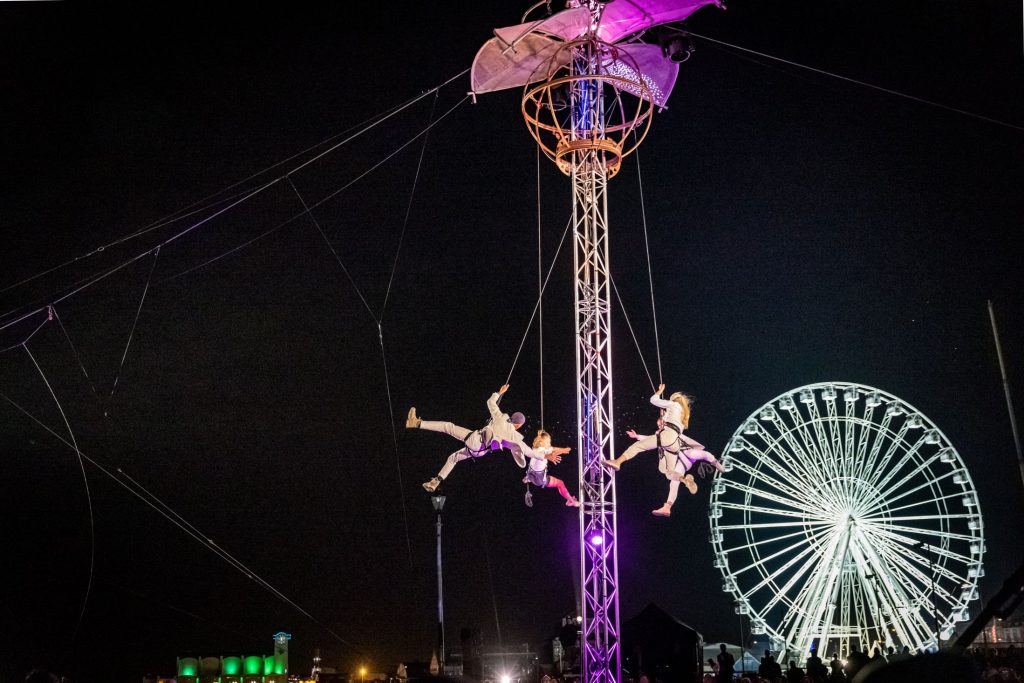
Outdoors first. In programming the Out There Festival of Circus and Street Arts (September 2021), the organisation have been rigorous in honouring commitments to artists booked for the aborted 2020 festival. They’ve also picked up the slack and booked artists whose premieres at other festivals were cancelled. Gorilla Circus, for example, whose show UNITY should have been seen at the cancelled Stockton International Riverside Festival.
The show closed the Out There Festival 2021 on a massive high, both literally and metaphorically. An enormous rig – sky high, but also long, in three sections separated by large pylons with platforms – becomes the site for a thrilling piece of circus-theatre. As lights sweep across the sandy beach, casting shadows and patterns, and a cracking electronic soundtrack by Peter Buffery builds (shades of classic Ninja Tunes here), the set becomes slowly peopled by a fabulous team of four humans – together with a number of mannequins, causing many a double-take! Nothing is hurried. We are allowed to experience each visual picture, and given time to hear and appreciate the soundtrack of poetic text (by Liverpudlian writer/actor Ellis Howard), who delivers a determined plea for political change: ‘Is this the best we could have done? Is this who we want to be?’ he asks. ‘Are we all in the same boat?’ Hardly. Cronyism and corruption is rife. Shared laptops and bad internet mean missed school, and meanwhile millionaires are engaging in a pointless space race. The voice continues: ‘The poorest of us will pay. We are in the worst mental health crisis of our lives. This system is broken. The only possible answer is to change everything.’ Meanwhile, the physical performance highlights include solo trapeze plus a gorgeous hair-hanging journey along the wire by Delia Ceruti, who has a wonderfully wriggly physical presence; and a shockingly scary chair balance and tightrope walk by Ellis Grover. There’s a lovely, positive finale as the four (human) performers spin around in a Mexican-style high carousel (there is possibly a name for this structure but I don’t know it!) as Ellis Howard speaks of a hopeful future in which humans forget egotistical journeys to the stars and work together to improve life on earth for all. A really interesting blend of powerful political theatre and extraordinarily skilled circus.
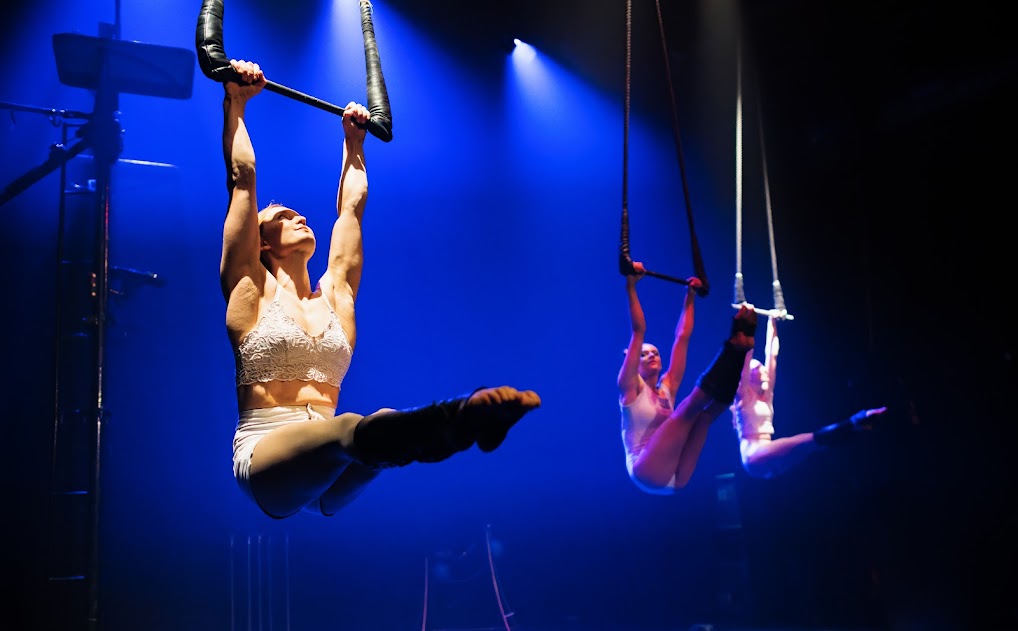
Meanwhile, down south, Jacksons Lane have kept their finger on the circus pulse in numerous ways throughout the terrible 2020–2021 season, which has coincided with the venue undergoing a massive redevelopment. They’ve made their spaces available for training, created a ‘building site’ show, made circus films, and taken circus out onto the streets of North London (on one occasion, in tandem with Christmas parcels and dinners for local elders). In recent months, they’ve created a brand new circus cabaret show called Luminosa, which re-opened the venue in September, this produced by Jacksons Lane with Lost In Translation Circus, and supported by Upswing Aerial Theatre and Extraordinary Bodies. Luminosa features a core-cast of seven circus artists plus special guests each night, with live music from Peter Reynolds, and is directed by Ade Berry (artistic director of Jacksons Lane) and Massimiliano Rossetti (director of Lost in Translation Circus).
As a cabaret format show, Luminosa features a series of acts not a whole-show linear narrative, but there is a feeling of it being a cohesive whole, with the rigging and kit change-overs built into the show very nicely; for example, when performers move in up the aisles with ropes wound around them, or shouldering trapezes and clutching carabinas. Interludes between acts are also filled beautifully with quirky songs performed live (with vocals, keyboard and accordion) by Peter Reynolds, who many in the circus world will know as NoFit State’s musical director. There is also a great twist on the classic floor-based clowning work that is a crucial element of any circus show (allowing for a contrast with the aerial work and, of course, a re-jigging and re-rigging opportunity), with tongue-in-cheek acrobalancing by Lawrence Swaddle and Tilly Mae.
As everybody onstage is in multiple roles as ‘act’ or ‘support’ or ‘crew’, there’s a great decision to have the cast clad in grey boiler suits, peeled off to reveal their specific chosen costume when it’s their turn to do a turn; the jumpsuits then re-donned to help out with the next number. We get a whole host of gorgeous acts. Tasha Rushbrooke gives us precise and controlled hand-balancing, whilst Zaki Musa gives us a burlesque take on flying pole – a near-naked male body, stripped down to a sassy sequinned jock-strap, sporting an extraordinarily fetishistic pair of high-heeled black patent boots that squeak enticingly as they rub up against the pole. And there’s foot juggling! Rarely seen in contemporary circus, so a lovely surprise – and delivered with great humour and panache by Val Jauregui. Aerial work includes a fabulous side-by-side aerial hoop duet (from Danielle Summers and Upswing associate artist Joana Dias) that takes an ebony-and ivory black-and-white theme through decoration of hoop to costume. Sometimes they are in tandem, sometimes one or other takes the spotlight, and eventually the black/white hoops are swapped – a gentle message on integration whilst retaining one’s own identity, perhaps? – all delivered with beautiful precision and artistic cohesion. There’s a thrilling aerial straps number, replete with awe-inspiring splits and drops, from Holly Downey, who is also one of the three-girl gang of trapezists; and a Russian Cradle finale from Massimiliano Rossetti and Roisin Morris that makes good use of the greatly increased head-height on the redeveloped Jacksons Lane stage.
It is thrilling to see such a clear example of how far British circus has come in the past couple of decades – we are no longer the poor cousins of the circus world.
Oh how we’ve grown! Twenty years ago, our national contemporary circus community was just emerging from the extraordinary experience that had been the Millennium Dome Show – which had seen the training and professional development of scores of UK-based circus artists, leading to a revolution of the artform in this country, this led by what was then called Circus Space (now National Centre for Circus Arts) with support from Arts Council England and others. This combined with the parallel initiatives taken by companies/training schools such as NoFit State in Cardiff and Circomedia in Bristol to lead off a game-changing era. All three of these venerable institutions have trained up and nurtured the performers seen now in Luminosa.
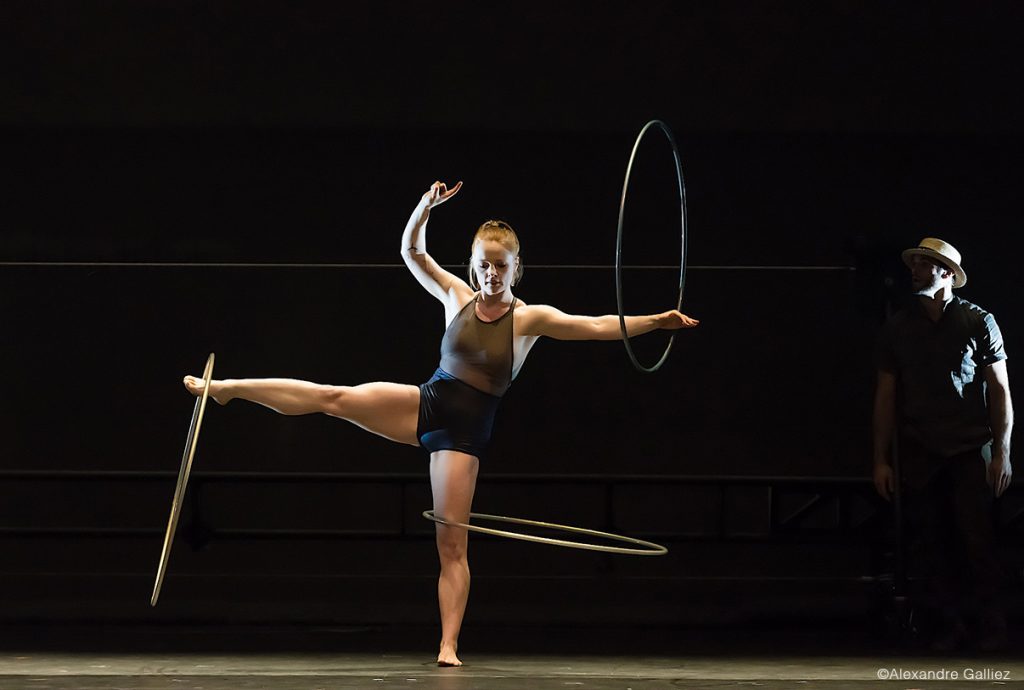
But two decades back, when seeing the phenomenal level of skill, artistry and professionalism from visiting companies from countries such as Canada/Quebec and Australia, we could only dream of a future in which British-based circus artists could reach such dizzy heights. One such visiting company, on the brink of its 20-year anniversary, is Les Sept Doigts de la Main (aka 7 Fingers). A Montreal based break-off from Cirque du Soleil, Les Sept Doigts stunned the world with their extraordinary integration of the highest level of circus skills with a theatrical sensibility. Their first show, Traces (or at least, the first to be presented in the UK – seen originally at the Edinburgh Fringe) totally changed the circus landscape, with its integration of circus skills with dance and spoken text, mining the possibilities of using autobiographical material in circus.
So, many years later – and post-pandemic – how are they doing? Passagers, which comes to Brighton Dome as part of a six-venue tour across England, does not disappoint. They are still at the top of their game. It is not a brand-new show – it was created and toured pre-Covid, but has been re-launched with a nine-strong cast (although only eight are present, including some original and some new members). As with many other of the company shows, Passagers is written, directed and choreographed by Shana Carroll – although, as with other shows, it is clear that devised material from the original cast is a crucial element.
The show is an ode to train travel: “Departure vs. transit vs. arrival. Chance vs. choice vs. destiny. Stillness vs. acceleration. Reflection vs. transparency. Familiar vs. foreign. Private vs. public. Confinement vs. border-crossing. Bright headlights vs. tunnel-darkness. Past vs. future…’
It is an oddly – although we presume deliberately – old-fashioned work. In the post-show discussion, an audience member asks the company if they know the work of Theatre de Complicité, which draws a blank, but I’m with that person in seeing a constant stream of Complicité (or perhaps it is Lecoq in general) tropes and images onstage. Most obviously, rows of chairs as train carriages; but there’s also all the hero-and-chorus groupings and swayings, the greetings and leave-takings, the rhythmic walkings and crossings of stage space, and the endless playing with piles of brown-and-blue leather suitcases. Actually, I know what it reminded me of – Gecko Theatre’s work. Now, this is not a bad thing. It’s classic physical theatre tropes, is what it is. Fine by me. It is also augmented by a very beautiful and sophisticated lighting design (lots of straw-and-steel and moody blues) and a great use of projections, both stills and moving image. On the back wall, we see passing landscapes, silhouettes of bodies to-ing and fro-ing across station forecourts, electricity pylons, and the gorgeous roofs of wrought-iron stations. In one shot we see a tight-wire walker – I presume this is missing company member Brin Schoelkopf.
Enacted in a limbo between leaving and arriving, many aspects of ‘journeying’ are explored. The classic 7 Doigts device of performers grabbing a mic to deliver a morsel of text is in full evidence (an autobiographical story of loss and moving on; a musing on the plights of refugees crossing borders; a reflection on the nature of time in light of Einstein’s theory of relativity). It feels very familiar these days – but I remind myself that when Les 7 Doigts first did this, it wasn’t. A company has the perfect right to use the theatrical devices it has pioneered and made its own!
As for the circus skills employed: a fabulous array, as we’d expect from these world leaders. Acrobalance, aerial hoop, hula, contortion, Chinese pole… Every single act is superb, so it feels a little mean to single any one out, but my personal favourite was the wonderful doubles trapeze (on a big fat double-sized bar) delivered by Marilou Vershelden (base) and Sabine van Rensburg (flyer), beautifully supported and augmented by whole-ensemble floorwork and hand-to-hand – so that, for example, Sabine jumps down into waiting arms, walks across a row of hands, and is then tossed up again to be caught by Marilou. Absolutely stunning work. Sabine also delivers one of the best silks/tissue act I’ve seen, an act that eschews pretty posing for pure power and strength in her twists and drops. I enjoy Argentinian Pablo Omar Pramparo’s clubs juggling – mostly because the integration of dance, physical theatre and object manipulation in this scene is so brilliant. And I must mention the Russian cradle act by base Samuel Renaud and flyer Louis Joyal (a company regular) whose swings and throws take on a phenomenal momentum and force as this metal contraption rocks back and forth. It’s odd – I think of Russian cradle as a rare circus discipline, and here I am seeing my second act in just one week!
It is so wonderful to see that international touring has once again resumed, and all kudos to everyone who has made this possible, including the Dance Consortium theatres who have worked together to bring the UK tour of Passagers to fruition. Un grand success, bravo!
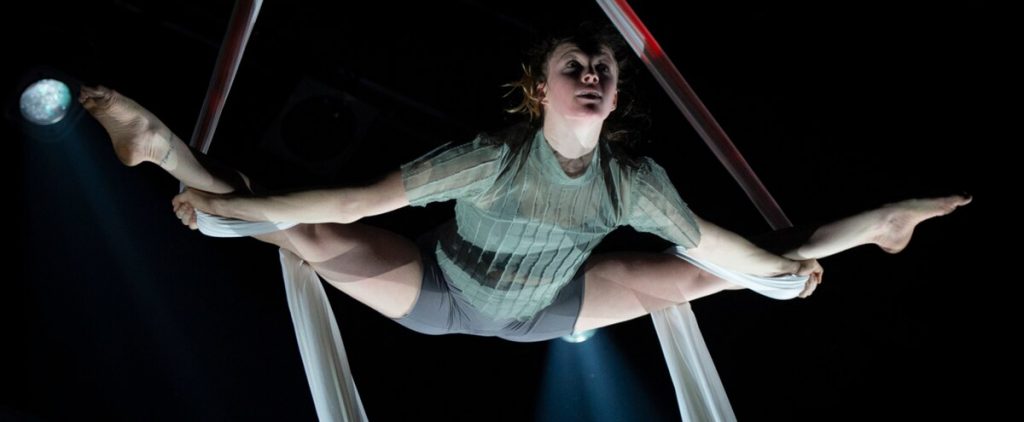
The 7 Fingers: Passagers was seen at Brighton Dome, 30 September 2021. Tour continues across the UK, supported by Dance Consortium. See https://7doigts.com/
Jacksons Lane/Lost in Translation: Luminosa was seen at Jacksons Lane theatre 22 September 2021. See https://www.jacksonslane.org.uk/circus/
Gorilla Circus: UNITY was seen at Out There Festival, Great Yarmouth, on 19 September 2021. See https://outtherearts.org.uk/out-there-festival/

